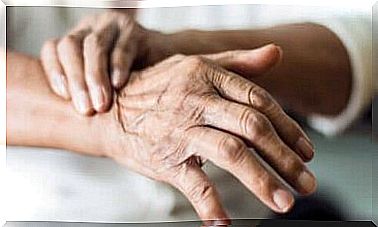Huntington’s Disease
Huntington’s disease (sometimes called Huntington’s chorea), or HD, was first described in 1872 by George Huntington, who called it hereditary chorea. The term chorea , derived from the Greek word for choreographic dance, has been used to emphasize the twists, grimaces, and uncontrolled twists that patients often experience. This is why it is also known under the name of “dance of St-Vitus” or “disease of St-Vitus”.
It is now called Huntington’s disease because the disturbances experienced go beyond motor problems. It is found in dementias triggered subcortically.

Huntington’s disease epidemiology
The prevalence of this disease is 5 to 10 per 100,000 people. The age of onset is wide; it ranges from 10 to 60 years. However, it usually appears around mid-life, between the ages of 35 and 50. There are two different forms of triggering:
- Infantile subtype, in 3 to 10% of cases the symptoms appear before the age of 20 years. There is a predominance of the paternal transition and a clinical setting characterized by slowness of movement, rigidity, significant cognitive impairment and often epilepsy
- Late or senile subtype, for which 10 to 15% present changes after 60 years. It is associated with maternal transmission, has a slower developmental course and mainly choreographic symptoms with little impairment of cognitive functioning.
With the appearance of the first symptoms, the deterioration is gradual, so that the patient’s life expectancy is between 10 and 20 years.
Genetic cause: alteration of the structure of the brain
The genetic alteration that causes Huntington’s disease is found in the short arm of chromosome 4. This mutation causes a series of changes in the structure of the corpus striatum and the cerebral cortex.
As the disease progresses, marked atrophy of the bilateral caudate and putamen nuclei appears, as well as atrophy of the frontal and temporal lobes.
On the other hand, neurotransmission systems are also impaired, the density of dopamine receptors is lower and there is a loss of abundant glutamatergic afferents from the neocortex.
The striatum is located in the forebrain and is the primary pathway for information to enter the basal ganglia, which play a role in motor and non-motor functions. Alterations in these structures or the result of their degeneration are the cause of the sympomatological triad characteristic of HD.
Huntington’s disease symptom triad
Motor disorders
These are generally the best known of this disease. They start with small tics, and the choreographic movements gradually increase extending to the head, neck and extremities, eventually producing significant limitations in the person’s life.
Speech is affected and, over time, communication becomes more difficult; the risk of choking on swallowing increases. The other disorders present are stiffness, slowness or the inability to initiate voluntary movements, especially complex ones; dystonia and eye movement disorders.
Cognitive disorders
In the first years of the disease, the most characteristic cognitive deficits are in memory and learning. The former are related to information retrieval problems rather than consolidation problems. They retain the recognition, however.
Spatial memory and long-term memory disorders are common. Although they do not have such a severe progressive deterioration.
There is an alteration in process memory. This means that patients can forget how to perform learned and automated behaviors. Attention also suffers, presenting difficulty in concentrating and maintaining concentration.
The other alterations present are: in verbal fluency, decreased cognitive processing speed, visuospatial alterations and impaired executive functions.
Behavior disorders
They can appear several years before the first motor signs. In the pre-diagnostic phases, personality changes, irritability, anxiety and disinhibition are common.
Between 35 and 75% of patients diagnosed will present with mental disorders. Some disorders are: depression, irritability, restlessness and anxiety, apathy and lack of initiative, affective changes, aggressiveness, fantasies and hallucinations, insomnia and suicidal ideation.

Treatment of Huntington’s disease and improvement of quality of life
Currently, there is no treatment that stops or reverses the course of Huntington’s disease. Interventions are primarily aimed at symptomatic treatment and compensation for motor, cognitive, emotional and behavioral disorders. The aim is to increase the patient’s functional capacity as much as possible and thus improve his quality of life.
Motor symptoms are treated with pharmacological treatment and physiotherapy. Behavioral and emotional alterations are controlled by a combination of pharmacology and neuropsychological rehabilitation.
Genetic counseling is an excellent tool in the fight against this disease. Indeed, it makes it possible to make a pre-symptomatic diagnosis in subjects at risk of HD having an affected family member. This then allows treatment to be started early and prepares the person emotionally for the illness.










